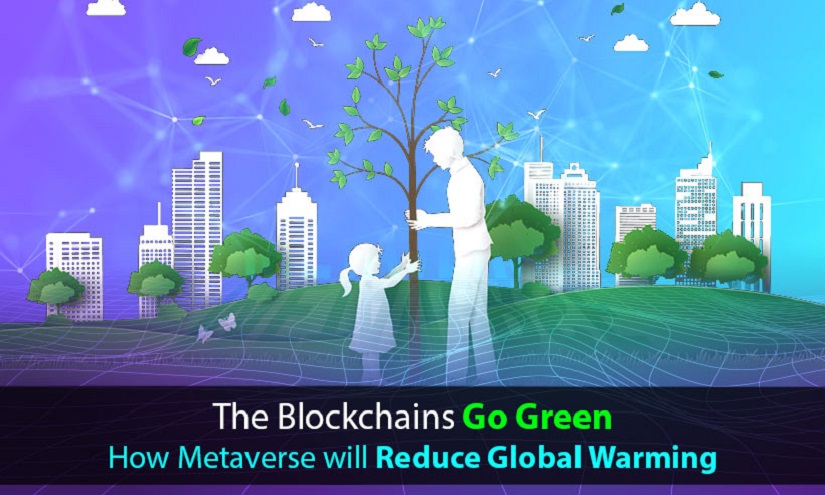By: Sobia Kishwer
The emergence of the Metaverse, a digital universe that blends the real and virtual worlds, has captivated the imagination of millions worldwide. With its promise of immersive experiences, digital property ownership through NFTs (Non-Fungible Tokens), and the rise of cryptocurrencies like Bitcoin and Ethereum, the Metaverse is undoubtedly reshaping the digital landscape. However, amidst the excitement, concerns about its environmental impact have gained prominence. This article explores the environmental implications of powering the Metaverse and how we can strike a balance between innovation and sustainability.

One of the defining features of the Metaverse is its dependence on vast amounts of computational power. Whether it's rendering virtual environments, hosting multiplayer online games, or managing blockchain transactions for NFTs and cryptocurrencies, the energy demands are substantial.
For instance, consider the Blockchain Technology that underpins many Metaverse applications. The Ethereum network, which supports a significant portion of NFT trading and crypto transactions, consumes a substantial amount of energy. Ethereum's Proof of Stake (PoS) upgrade has aimed to address this issue, but other blockchain platforms still rely on energy-intensive Proof of Work (PoW) consensus mechanisms. Bitcoin, the most prominent cryptocurrency, has faced criticism for its high energy consumption due to PoW.
Mining Crypto in Virtual Worlds: Some Metaverse experiences involve virtual mining activities that mirror real-world cryptocurrency mining. While this adds to the immersive nature of the Metaverse, it can also consume significant computational resources.
VR Streaming and Content Creation: Virtual Reality (VR) experiences within the Metaverse demand powerful hardware for rendering and streaming. This results in energy-intensive data centers and equipment.
Server Farms for Persistent Worlds: Online multiplayer games and virtual worlds within the Metaverse require extensive server infrastructure, contributing to energy consumption.
The environmental concerns tied to the Metaverse's energy consumption are twofold:
Carbon Footprint: The energy required to power the Metaverse often relies on fossil fuels, contributing to carbon emissions and climate change. For example, data centers that host Metaverse servers may run on non-renewable energy sources.
Electronic Waste:The rapid evolution of hardware in the Metaverse leads to frequent upgrades and discarding of older devices, contributing to electronic waste. This e-waste poses environmental hazards when improperly disposed of.

Sustainable Solutions
Balancing innovation in the Metaverse with environmental responsibility is crucial. Several steps can help mitigate the environmental impact:
Transition to Renewable Energy: Metaverse Platforms and data centers should prioritize using renewable energy sources like solar, wind, and hydroelectric power to reduce their carbon footprint.
Efficient Hardware Design:Promote the development of energy-efficient hardware for VR devices and servers to reduce energy consumption.
Blockchain Energy Efficiency: Continue the transition from energy-intensive PoW to PoS or other energy-efficient consensus mechanisms in blockchain networks.
Circular Economy Approach: Encourage recycling and responsible disposal of electronic devices used in the Metaverse to minimize e-waste.
Carbon Offsetting: Consider investing in carbon offset initiatives to compensate for the carbon emissions generated during Metaverse operations.
The Metaverse represents an exciting frontier in digital innovation, offering new opportunities for creativity, entertainment, and economic growth. However, its energy consumption and environmental implications cannot be ignored. By adopting sustainable practices, transitioning to renewable energy sources, and promoting energy-efficient technologies, we can harness the potential of the Metaverse while minimizing its negative impact on our planet. Striking a balance between the digital world and environmental responsibility is not only possible but imperative for the future of the Metaverse. As the Metaverse continues to evolve, let's ensure that its footprint on the planet is as light as possible.
